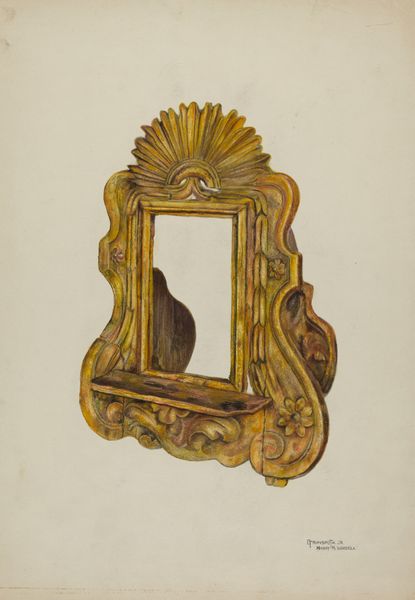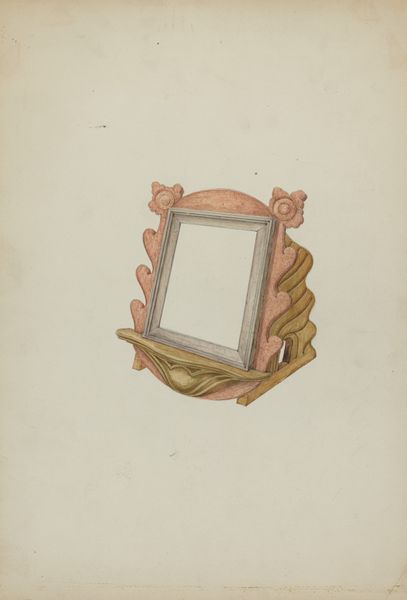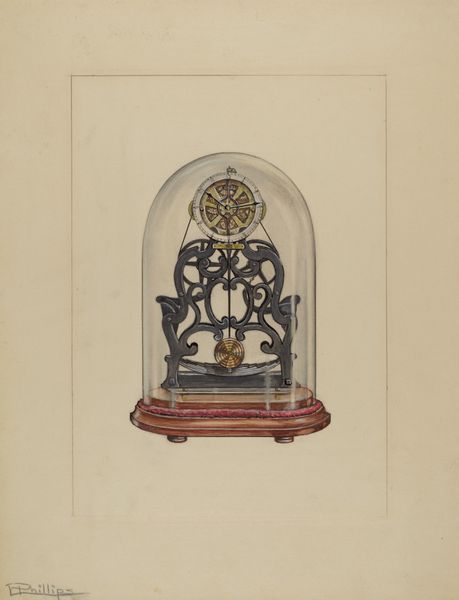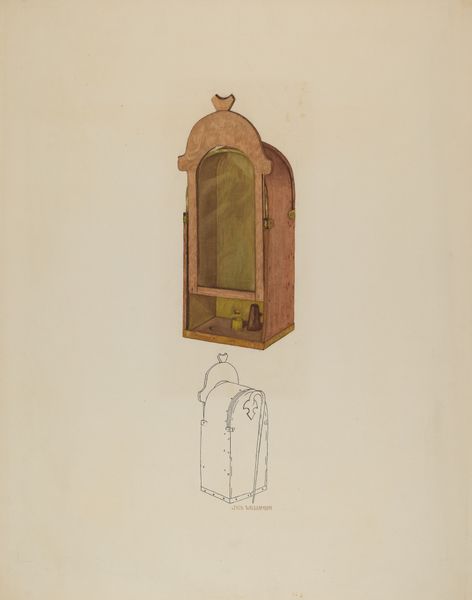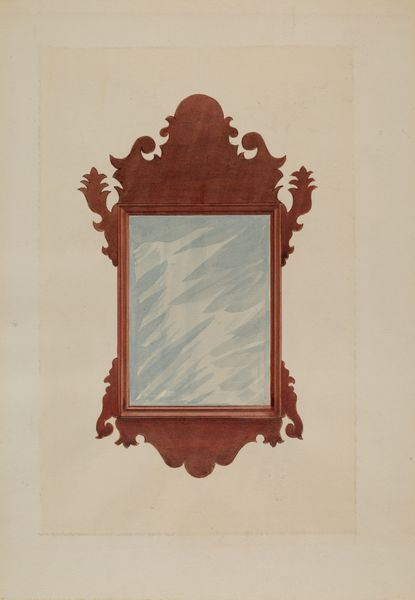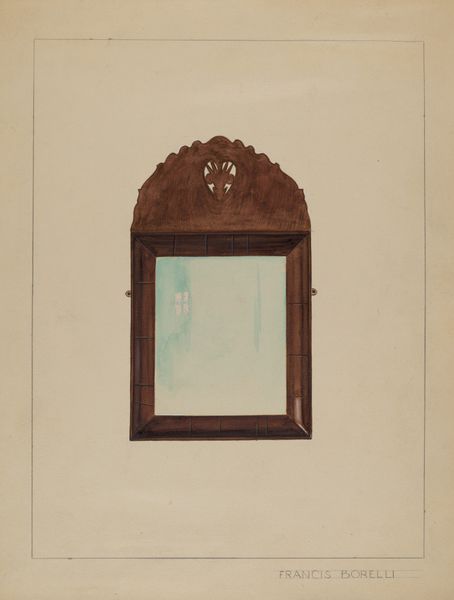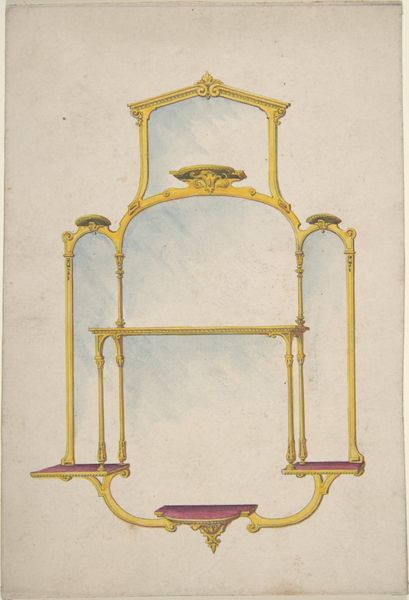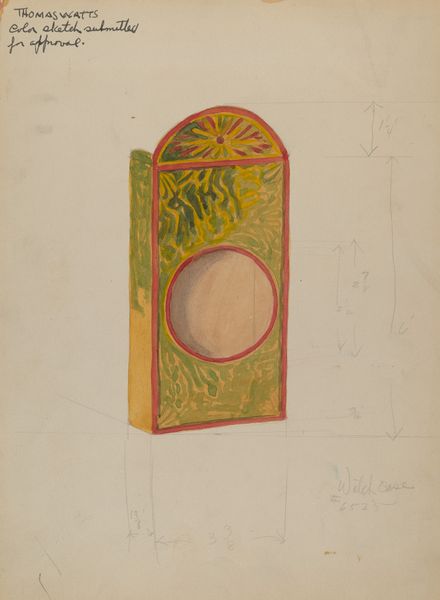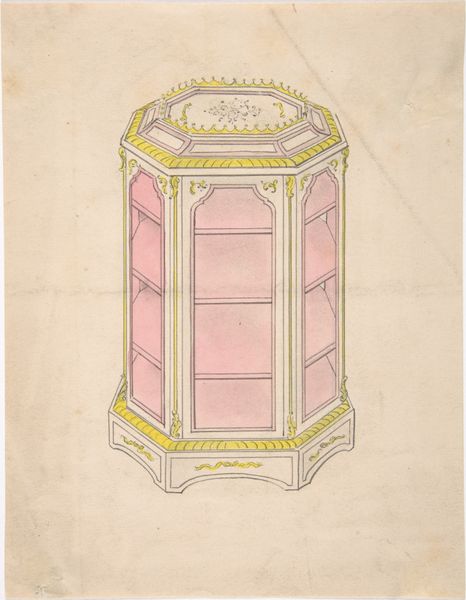
drawing, watercolor
#
portrait
#
drawing
#
medieval
#
form
#
watercolor
#
geometric
#
watercolor
Dimensions: overall: 35.8 x 26.7 cm (14 1/8 x 10 1/2 in.) Original IAD Object: 32 1/2"high; 18"wide at base.
Copyright: National Gallery of Art: CC0 1.0
Editor: We're looking at "Sanctum, Carved from Wood" created by Alexander Chudom in 1937, a drawing made with watercolor. I'm struck by its symmetry and the unusual choice of colors - it feels both classical and somehow otherworldly. What do you make of this piece? Curator: The most immediate aspects are indeed the symmetry and contained composition. Observe how the structure adheres to fundamental geometric forms: the pillars establish verticality, while the arch contributes a sense of enclosure. The use of watercolor allows for subtle gradations in color, emphasizing the interplay of light and shadow within the defined space. Notice too, how the application of color segments the archway above. Do you find this echoes historical modes, such as architecture? Editor: I see what you mean about historical architecture. Is that intentional or coincidental? I guess I am interested in what is inside; how would we define the space within? Curator: Whether deliberate or subconscious, the work evokes historical styles, inviting speculation about architectural representation. But to your point regarding what lies within: Observe the marbling effect achieved with watercolour, the form's inherent hollowness is given substantial texture. There is something architectural but also stage-like in the form itself. What purpose might a structure such as this serve? Editor: A stage! I didn’t think of it that way! Perhaps it displays… nothing? Or perhaps it awaits being filled. Curator: Precisely. The essence lies in the structural elements themselves—the rhythm of line, the balance of color, and the formal resolution within the frame. The suggestion of depth and perspective serve the architecture itself; in fact, the empty stage emphasizes the inherent qualities of form and design that constitutes its primary aesthetic value. Editor: That's a very interesting approach. So, rather than focusing on any narrative, it is more about appreciating how the artist structured the form with balance, and with lines and colors? Curator: Exactly. The artistic merit resides not in external references, but in the internal coherence and visual harmony of its components. It invites the viewer to contemplate fundamental questions of form, space, and representation. Editor: That gives me a new lens through which to appreciate abstract work. Thanks for pointing that out! Curator: My pleasure. It's in deconstructing forms that their essence often is discovered.
Comments
No comments
Be the first to comment and join the conversation on the ultimate creative platform.


